What Was Meal Service Like On Jet Aircraft In The Early 1960s
Passengers' memories virtually air travel in the Soviet Union vary: some believe that back and so ceremonious aviation was more accessible and affordable than now; for others, on the reverse, information technology is associated with endless queues for tickets. So what were things really like?
Officially, Soviet civil aviation was born in 1923, when 'Dobrolyot', a voluntary air fleet society, was prepare up to send passengers and postal service. In 1932, Dobrolyot was transformed into the Main Civil Air Fleet Directorate, known as Aeroflot, which became the official (and only) airline in the USSR. By that time, the Soviet Marriage had developed its own shipping: U-2, PS-nine, G-5.
Routes were not numerous: flights connected Moscow, Nizhny Novgorod, Kazan, Kharkov, Odessa, St. petersburg and Kiev. Vladivostok or Yakutsk could be reached only with stopovers.
This is how the offset passengers of a U-2SP airplane traveled in 1940:
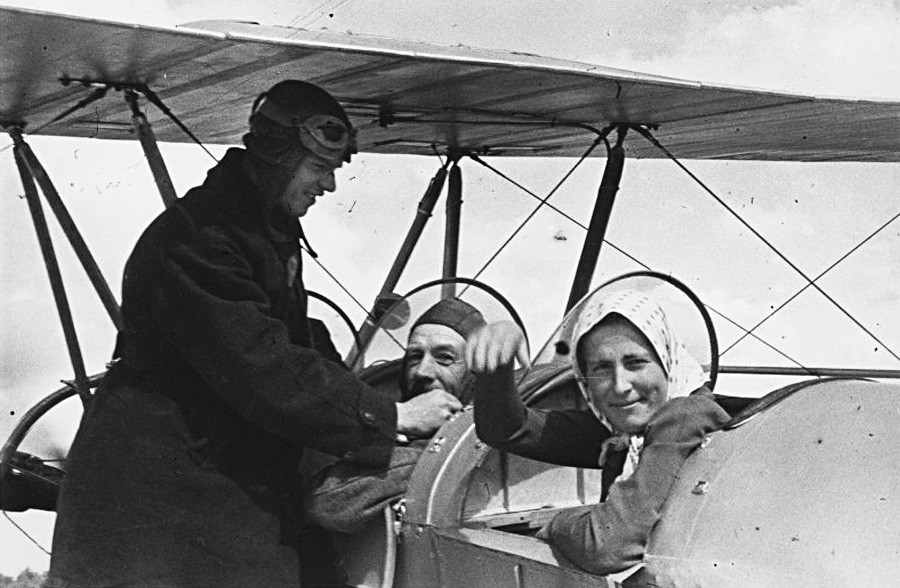
Civil aviation began to develop in the Soviet Spousal relationship for real merely later the Great Patriotic War. In the 1950s, Aeroflot received jet aircraft, and flying became much faster and more pleasant: if in the 1930s a flying from Moscow to Nizhny Novgorod took iv hours, now it was just an hr and a one-half.
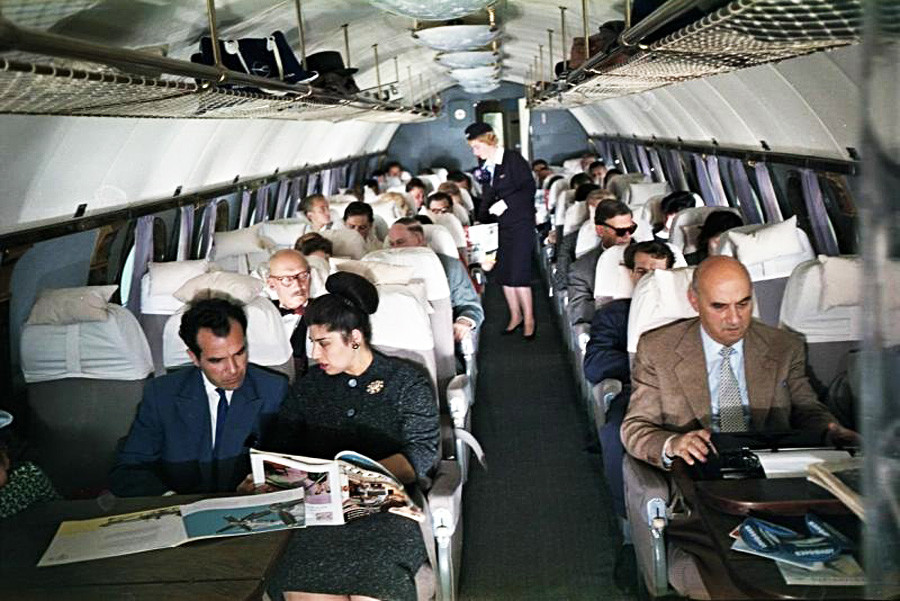
The Tu-104 jet aircraft had its maiden flying on the Moscow - Omsk - Irkutsk route in 1956. Smoking was immune on lath (on foreign flights, smoking on lath was allowed until 2000).

In the 1960s, air traffic connected non but the capitals of the Soviet republics, but regional centers, too. The number of airfields mushroomed all over the state. For example, from Voronezh (an industrial center in southern Russia) in that location were flights to virtually a hundred cities.
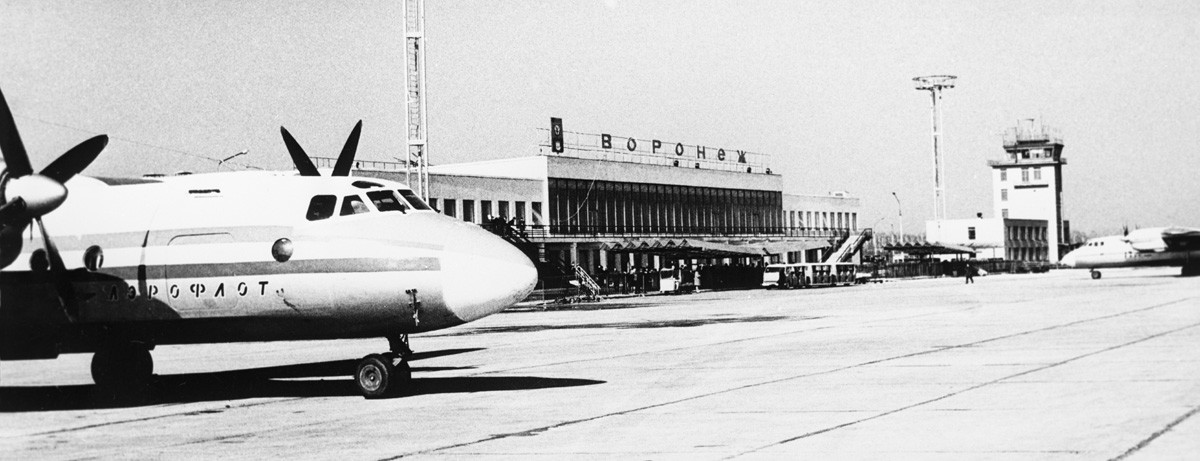
Voronezh Airport.
E.Khmeltsev/Sputnik
In 1976, Aeroflot became the earth'due south offset airline to accept carried over 100 million passengers in a year.
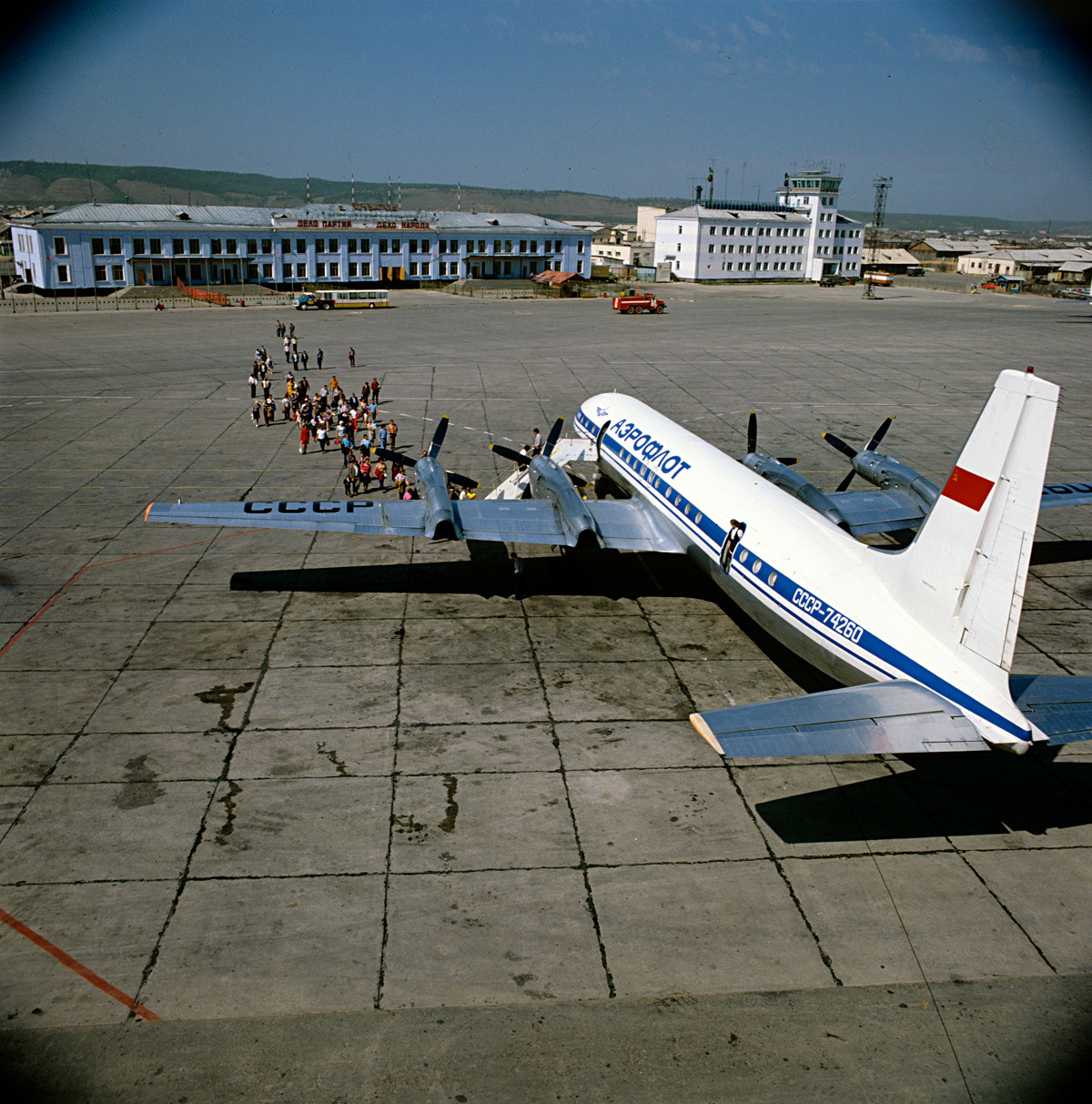
Yakutsk airport.
Mark redkin/Sputnik
By the early 1960s, Moscow had four airports: Vnukovo, Bykovo, Sheremetyevo and Domodedovo. The capital was considered the country's chief send hub - it connected more than 200 cities in the Soviet Union. This is what Domodedovo airport's terminal looked like in 1965:
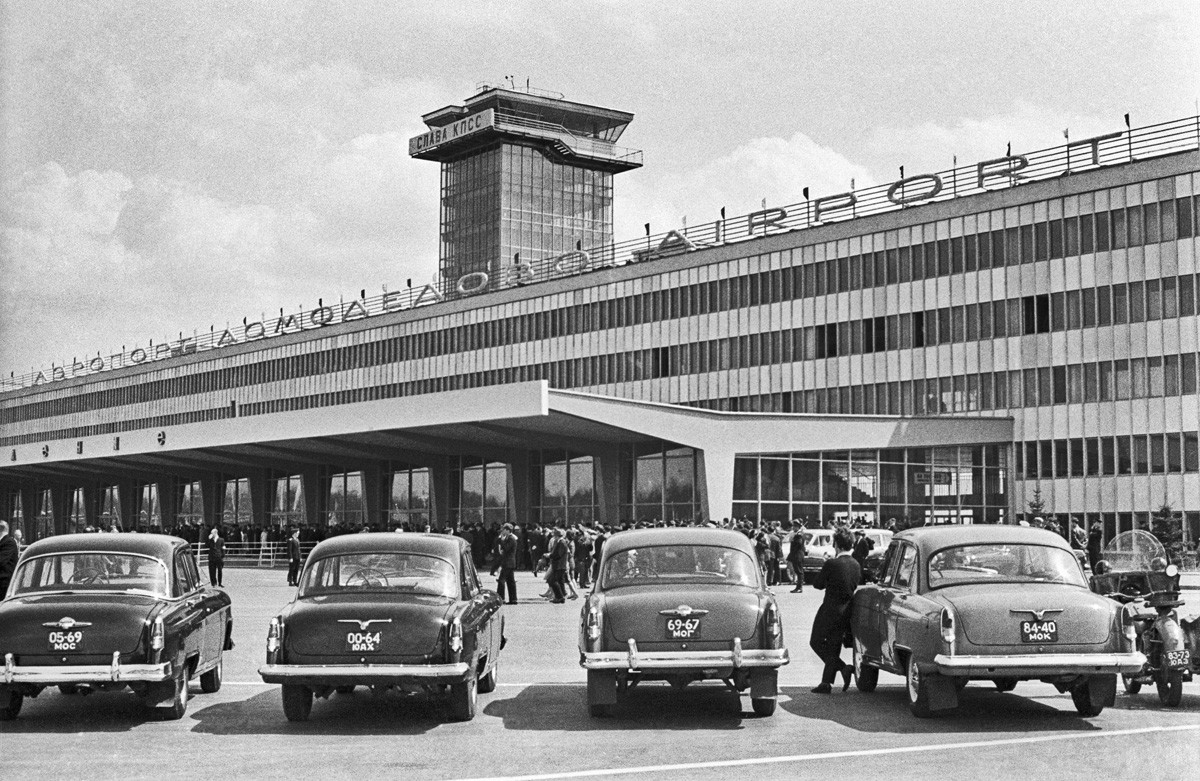
Domodedovo airport, 1965.
Sergei Preobrazhensky/TASS
So how much were tickets? The Moscow Passenger Transport directory for 1990 lists the following ticket prices from Moscow: to Sochi, 31 rubles (about 3,400 in present-day rubles, or $50), to Leningrad, 18 rubles (1,900 rubles, or $29), to Vladivostok, 134 rubles (14,600 rubles or $220). These prices are quite comparable with today's air fares, but i should conduct in mind that the boilerplate monthly salary of a specialist in the USSR was 170 rubles, so far from everybody could afford to wing. That said, flights within regions or between regional centers were much more affordable.

Vnukovo.
Georgy Petrusov/Sputnik
The ticket price included meals (that were served on real red china plates) and a baggage assart. Each passenger could check in 20 kg for gratis, plus bear-on luggage. On small aircraft, like the An-2, and helicopters, baggage was express to 10 kg.
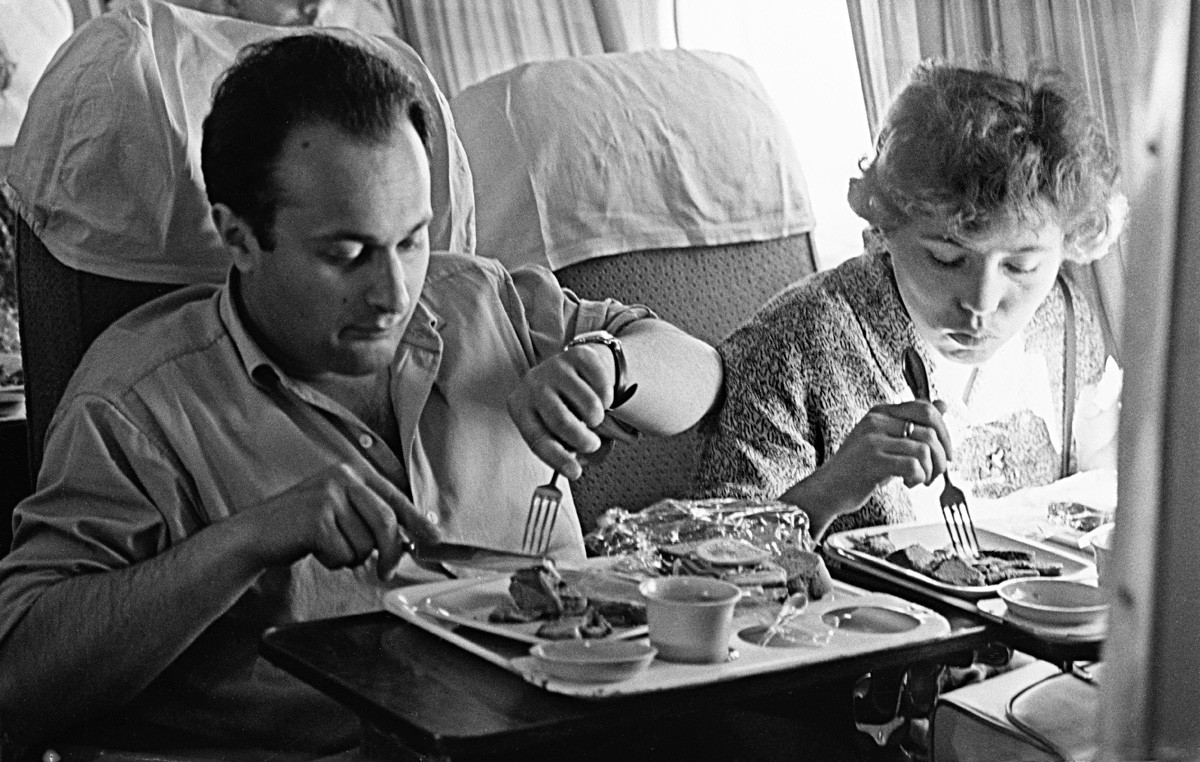
Passengers dine on board Tu-104, the outset Soviet passenger jet.
Valeriy Shustov/Sputnik
Children under 5 could travel for free, while those anile between 5 and 12 were entitled to a 50 percent disbelieve. During the academic year, from Oct to May, the same discount applied to all schoolchildren and students. All prices were fixed. War veterans were entitled to free air tickets twice a twelvemonth.
A flight attendant serves passengers on board a Tu-104 shipping in 1958:

A baby on lath Soviet Tu-104.
B. Vdovenko/Sputnik
Tickets were sold at special air travel terminals. Getting a ticket to a pop destination like Anapa or Sochi was not e'er piece of cake.
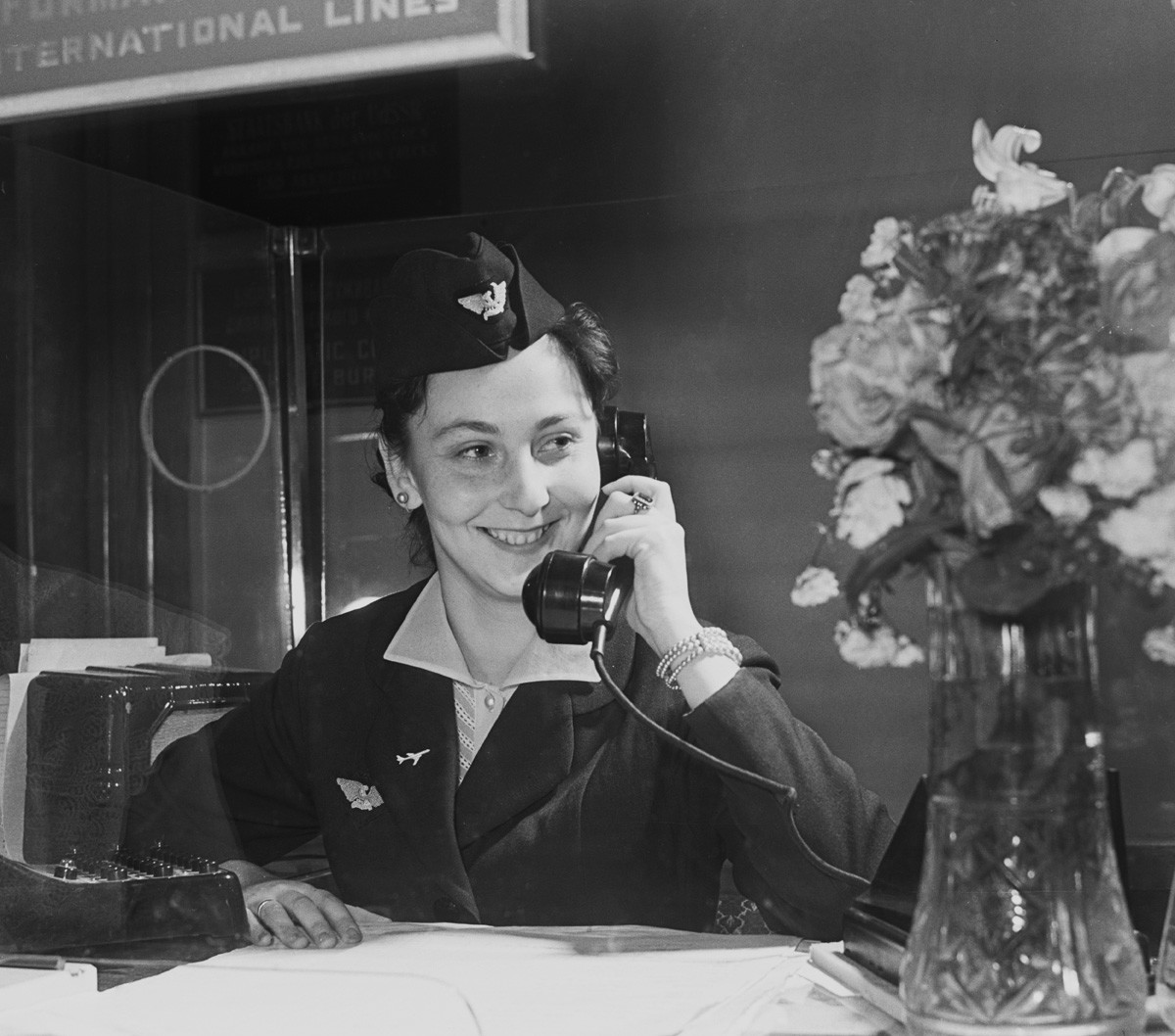
July 1, 1958. An employee of Aeroflot answers a telephone call.
TASS
An interesting fact: until the 1970s, airplane tickets could be bought without a passport – they were not issued with a particular name. Passengers were only required to produce an ID when checking in at the airport.
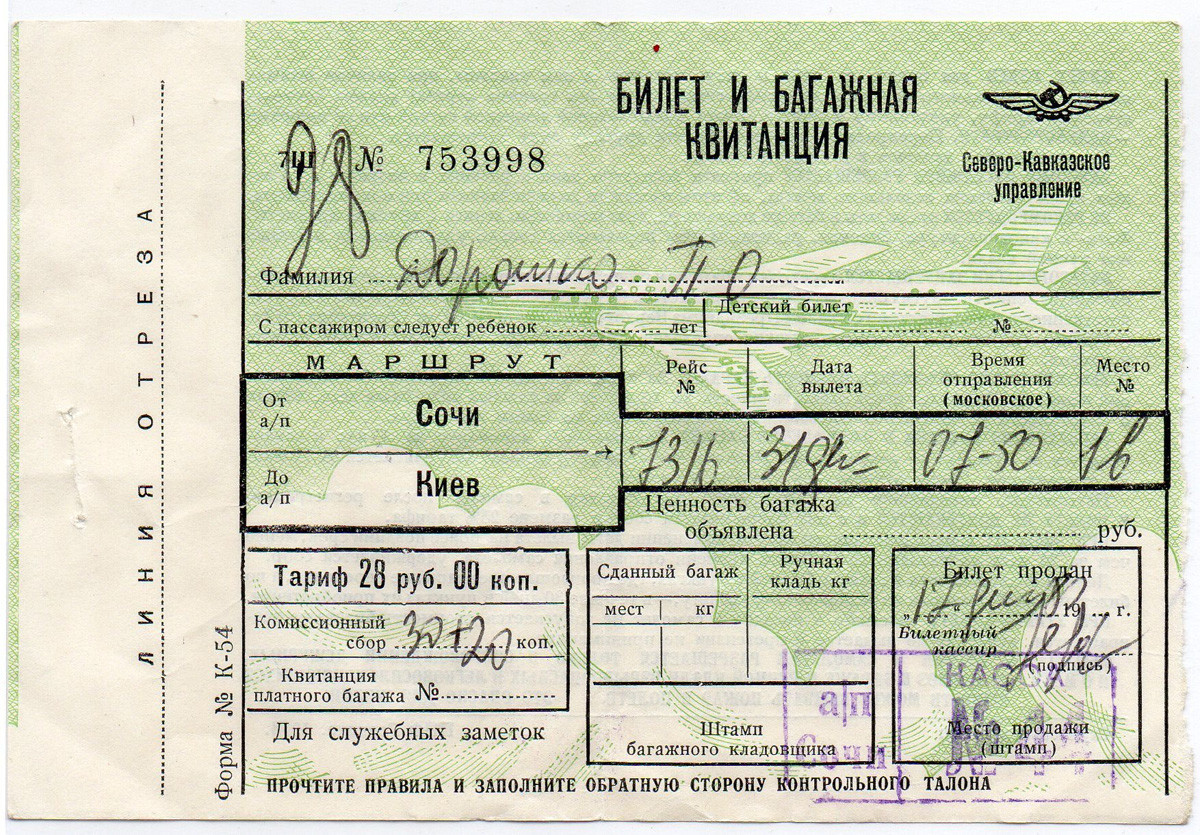
In Moscow, cheque-in could be done both at the aerodrome and at the air travel terminal onLeningradsky Prospekt (Leningradsky Artery) in Moscow. Inside, information technology looked similar a regular aerodrome last, except that there were no planes. From at that place, special express buses transported registered passengers to the relevant airports. In those days, in that location were few cars in Moscow and the journey but took an hour and cost less than 1 ruble (100 present-day rubles, or $1.v). Similar buses ran betwixt the urban center's four airports for transit passengers, offering a very convenient and fast service.
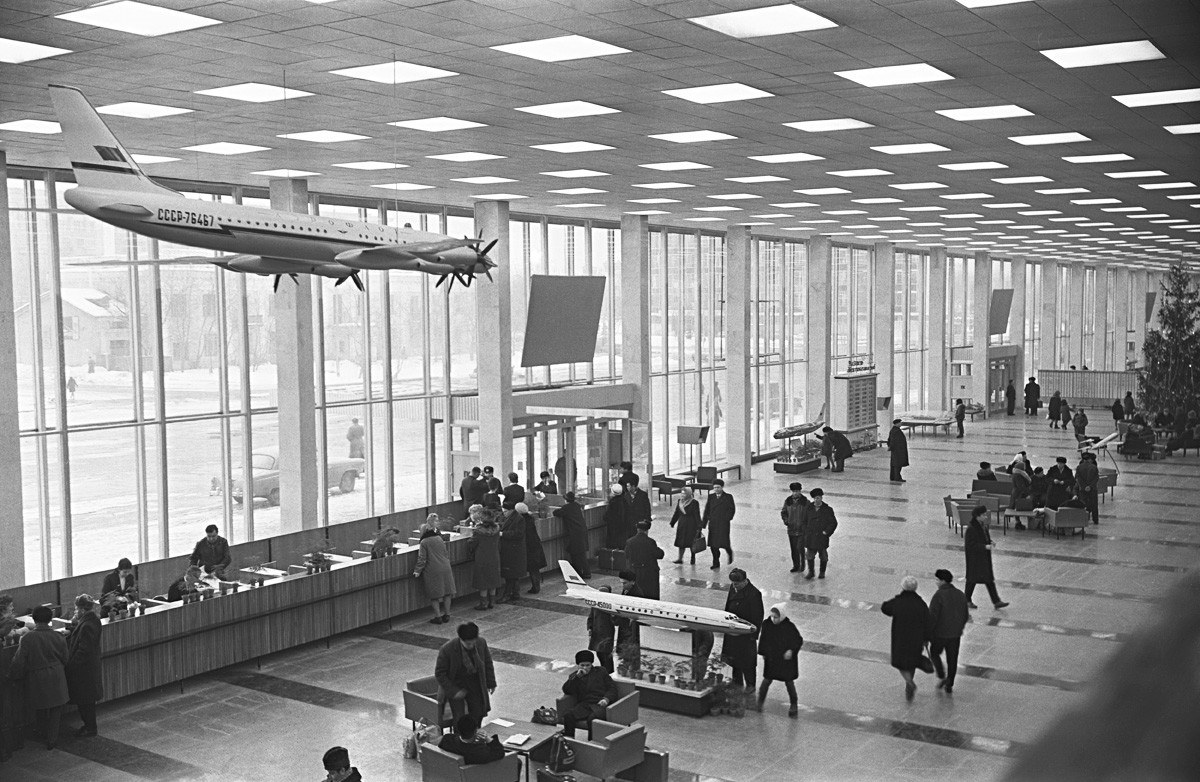
Moscow, 1966. The terminal interior view.
Nikolai Akimov, Naum Granovsky/TASS
Incidentally, although the Soviet Union had regular international flights (to the U.S., Europe, and Asia), an ordinary citizen could not buy a ticket for these flights. In Soviet times, but a few people who had get out visas could travel abroad.
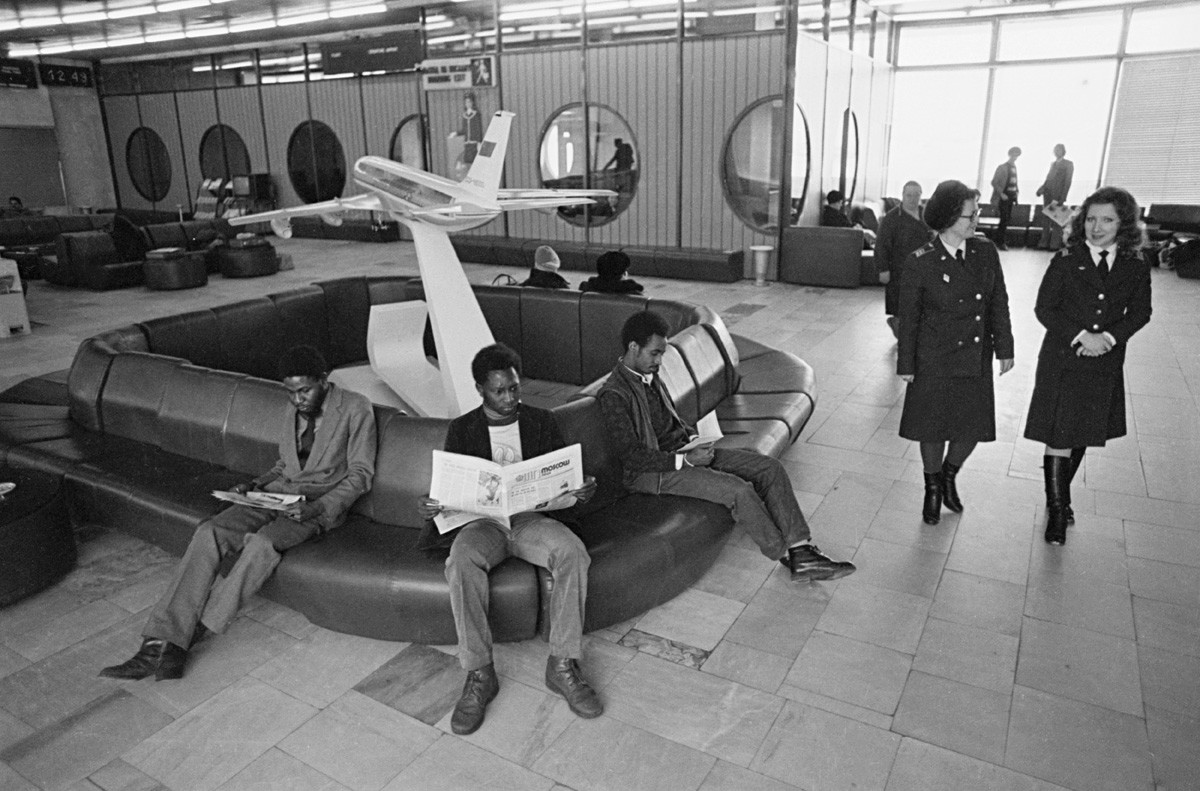
Vnukovo, 1983.
Vladimir Yatsina/TASS
So, who was allowed to fly on those flights? Cultural figures, officials, athletes, and of course, strange tourist groups. If on domestic flights, there was no partitioning into different classes of service nevertheless on international routes Aeroflot did try to meet the all-time of western standards.
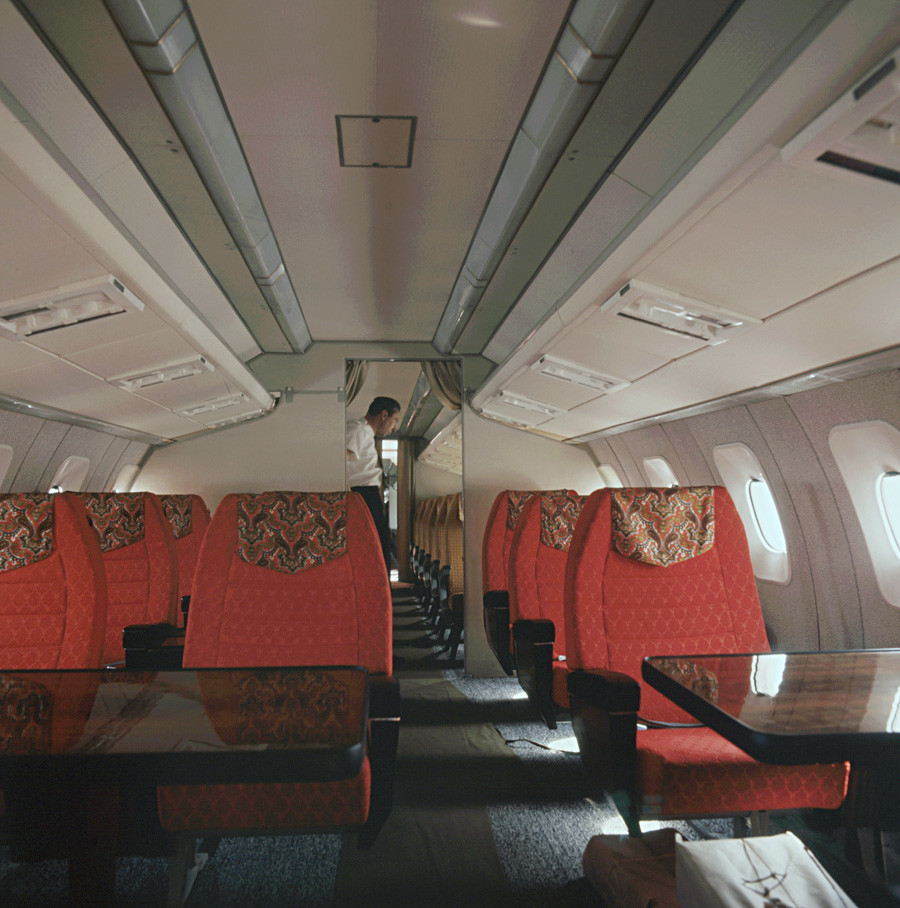
Tu-144, 1973.
Viktor Velikzhanin, Vitaly Sozinov/TASS
Past 1990, Aeroflot was already transporting more than 140 million passengers annually. By that time, the state had some 1,500 airfields, mostly in the regions. Incidentally, there are less than 300 of them remaining nowadays.
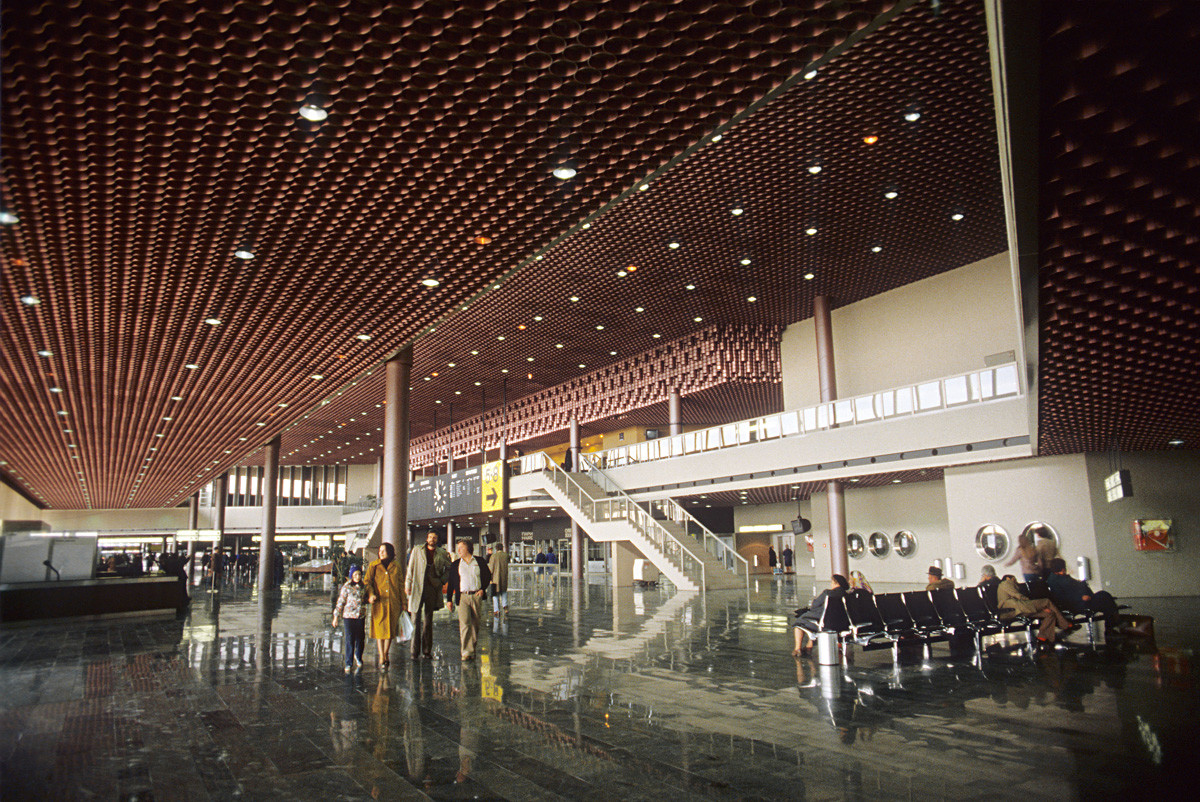
Sheremetyevo-2, 1980.
Boris Korsin/TASS
If using whatever of Russia Beyond's content, partly or in full, always provide an agile hyperlink to the original fabric.
Get the week'southward best stories straight to your inbox
What Was Meal Service Like On Jet Aircraft In The Early 1960s,
Source: https://www.rbth.com/history/330899-soviet-civil-aviation
Posted by: copeinver1942.blogspot.com


0 Response to "What Was Meal Service Like On Jet Aircraft In The Early 1960s"
Post a Comment